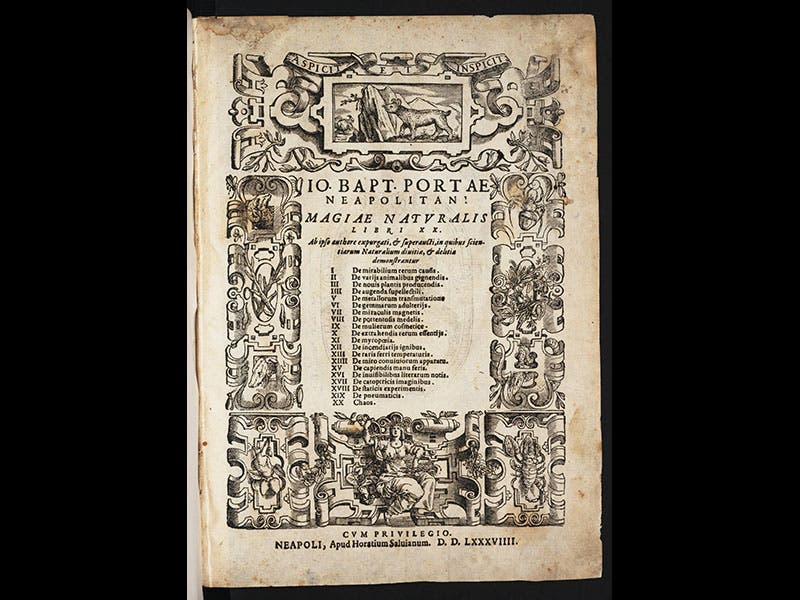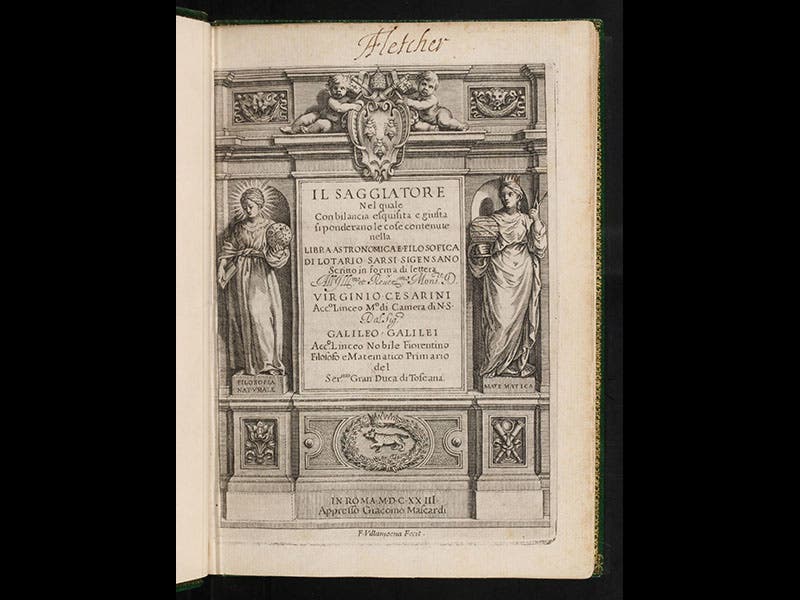Scientist of the Day - Federico Cesi
Federico Cesi, an Italian nobleman and patron, was born Mar. 13, 1585. In 1603, when he was only 18 years old, Cesi formed an academy devoted to the study of nature, and he called it the Accademia dei Lincei, the Academy of the Lynxes, because of the animal's reputed keen vision. There were originally 4 Linceans, and the Academy had a rough go at the outset, since Cesi's father forbade Cesi to associate with what he suspected were sorcerers and natural magicians. But in 1610, a fifth member was added--the Neapolitan Giovanni Battista della Porta, and this was a real coup, since Porta was of a much older generation, and highly respected (even if he was even more of a sorcerer and natural magician). Indeed, it was the title page of Porta's book, Natural Magic (1589), that provided the image of a lynx-eyed lynx that spawned the academy's name (first and second images).
Then, in 1611, Cesi attracted his sixth member--Galileo Galilei. Galileo had just unveiled his telescopic discoveries about the moon and the satellites of Jupiter and published his Starry Messenger, and it was Cesi who arranged for Galileo to come to Rome in the spring of 1611 and demonstrate his telescope at a gathering of notable men at a villa, with great success. Galileo was subsequently invited to join the Academy, and he accepted eagerly. In fact, Galileo included the lynx icon and the term "Linceo" on the title pages of several of his subsequent books, two of which (the Letters on Sunspots (1613, third image) and the Assayer (1623, fourth image), the Academy was responsible for publishing. Another Academy member, Francesco Stelluti, also displayed the Lincean emblem on the title page of his Persio (1630, fifth image), very appropriately so, since this is the first book to contain an image of an organism viewed through a microscope (a trio of Barberini bees).
Unfortunately, Cesi died suddenly in 1630, and the Academy, held together by his financial support and forceful personality, broke up. The Academy was revived in 1847 and is still a thriving scientific organization, and the original lynx logo, thankfully, is still a part of their masthead. Cesi’s portrait (sixth image) is in the Palazzo Corsini in Rome.
Dr. William B. Ashworth, Jr., Consultant for the History of Science, Linda Hall Library and Associate Professor, Department of History, University of Missouri-Kansas City. Comments or corrections are welcome; please direct to ashworthw@umkc.edu.












